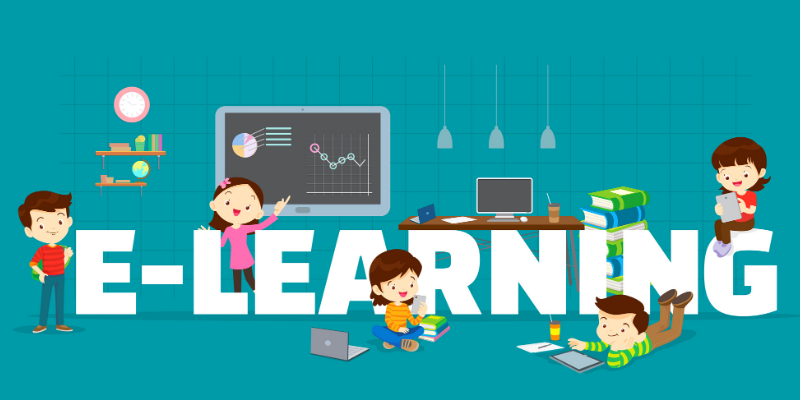On May 17, Finance Minister Nirmala Sitharaman announced a host of new initiatives to propel the growth of online education in India amid the COVID-19 crisis. The announcement of 12 new TV channels (one for every grade in K-12) is a massive and unprecedented step towards increasing the reach of educational content for Indian households, especially the ones which lack access to a high-speed internet connection for unhindered consumption of learning content.
This initiative is expected to significantly increase the adoption of e-learning in India. Access to 24x7 channels, which run digital content for students, will make them accustomed to beyond school learning and e-learning. TV channel-based learning can have additional benefits such as:
- Reaching households which do not have access to high-speed broadband yet
- Child safety, as compared to the Internet
- Providing instant access to learning content without onboarding
Amid the ongoing crisis, these initiatives are going to help millions of students to continue their learning process. At the same time, the introduction of these TV channels and the current pandemic will unlock new possibilities for edtech going forward.

Ushering in a new era of e-learning
Until now, India was yet to experience the growth curve in online learning the way the US or China had in the recent past. The current crisis has made online learning and homeschooling more pertinent than ever. It has fast-forwarded the adoption of online learning by five-to-seven years within a matter of a couple of months.
Schools are expected to stay closed and kids are discovering online modes of learning like never before. Interestingly, it's not the parents or students but rather the teachers who are leading this change. In the pre-pandemic era, the teachers traditionally never used to teach online due to ‘high inertia’.
Now, they have moved to the online mode of teaching and have discovered the benefits it entails. This has made the shift more sustainable and makes it here to stay. Teachers have been forced to innovate during the current crisis. This sustained innovation may lead to a lasting change in the way we educate our kids in the post-pandemic era.
Learning outside schools:
In India, we still follow the ‘Factory Model’ of education where kids are treated as part of an assembly line, learning essentially the same things at an ‘average’ pace of the class without much personalisation. This ‘Factory Model’ exists because it's the most economical or sustainable way to educate a large number of kids together with limited resources. However, is there some other way we could try once things get back to normal?
In the current situation, while homeschooling their kids, many parents have wondered about the purpose of schooling itself. Why do we send our kids to school every day? If we're not sending them to school every day, what are they missing out on? They can get access to content at home online, and soon, learning will be made even more accessible through these new TV channels being introduced by the government.
So what exactly are they missing out on? At the core, they are missing socialisation i.e. learning to get along with people and work with those who are not part of your family. Also, parents miss somebody else taking care of their kids and they are missing the fact that they can go about their lives for six-to-nine hours a day without having to take care of their kids.
Given the easy access to content through technology and these new initiatives, the necessity of a school is not primarily academic, but to foster socialisation and enable outsourced parenting and learning.
EdTech players, having provided solutions for content and access, are now innovating new possibilities in this uncharted territory of social and group learning to enable education beyond the boundaries of a school.
Homeschooling finding its feet in India
The innovations teachers use during the outbreak and initiatives, such as the one announced by the government, may lead to lasting change, with technology playing a bigger role in the learning process in the future.
Digital technologies are increasingly being used to deliver lessons to children at home. With the availability of digital content and edtech tools, parents are now empowered to make homeschooling a reality.
India has always had a parallel homeschooling system mainly driven through the massive private tutoring market because the quality of schools is generally not considered up to the mark. Schools are mainly being used as an engagement activity by the parents. However, formal homeschooling has not been possible in India owing to the following factors:
- India’s education market is price sensitive. For it to be affordable, parents require three-to-four kids to be homeschooled together to bring economies of scale and make it affordable.
- Lack of skills/time among parents to enable homeschooling
- Lack of a standard curriculum that parents can follow while homeschooling their kids
Hence, homeschooling in India has been traditionally restricted to parents who have the skills and time at home to homeschool children or to the premium segment and well-to-do parents who can afford it. Now, however, as the online learning era dawns upon us, homeschooling has become viable because a group of kids can connect from various parts of the country using online modes.
Therefore, fees-per-slot can be shared. Helped by the introduction of new TV channels, high quality and curated content will be easily available at the click of a TV remote button and will be directly accessible at our homes.
Learning content is king, but free
With this new initiative, and due to the onset of online learning, quality learning content will be freely available to anyone who needs it. It is important to not view education with the same lens as music streaming or OTT platforms. While the latter is only about content consumption, the former is about ‘learning’ rather than simply consuming content.
Learning is a process that involves content, delivery, and understanding. Hence, the need for a mentor who can guide, motivate, and counsel the student at a dedicated time slot. This is similar to working out at a gym – the equipment is essential but a dedicated schedule and a motivating instructor are important for losing weight.
In the market where content is free, edtech companies must evolve to facilitate the actual learning process through value-added services, such as the presence of a mentor, dedicated time slots, testing, career counselling, certifications etc.
Challenges to be overcome
While the initiative is a great step towards democratising education, it comes with its own set of challenges that have to be overcome.
Engagement: TV channels are traditionally a one-way communication channel, leading to weaker engagement due to lack of interaction. While this could be solved by using technology, such as live polls through an accompanying app, it remains an unsolved challenge.
Tutoring: While TV channels will be able to solve for content, the larger problem of tutoring and doubt-solving will remain unaddressed. Studies have shown that the timely availability of a mentor can improve learning outcomes significantly.
Personalisation: A TV channel programme needs to be created for the masses. This ‘one-size-fits-all’ model means that children who are ahead or behind the curve would not be able to benefit from the content. Moreover, TV would not be able to adapt to the different learning styles of the children, thus lacking the personalisation that tech platforms can bring in.
Social Learning: Learning is a social and interactive process. Research from Harvard University suggests that peer learning can significantly improve learning outcomes as peers face the same problems and can explain and empathise better. TV-based learning wouldn’t be able to activate social learning. Industry players also need to solve for socialisation and enable social learning through technology and not just content, curriculum, and availability.
Measuring outcomes: TV channels can only measure the input metrics and not the learning outcomes due to the lack of data collection. As a result, there would be a need for a system that can measure learning outcomes and helps in providing timely feedback.
(Edited by Kanishk Singh)
(Disclaimer: The views and opinions expressed in this article are those of the author and do not necessarily reflect the views of YourStory.)
Want to make your startup journey smooth? YS Education brings a comprehensive Funding and Startup Course. Learn from India's top investors and entrepreneurs. Click here to know more.
Link : https://yourstory.com/2020/06/future-edtech-india-education-system-elearning
Author :- Kunal Malik ( )
June 07, 2020 at 07:16PM
YourStory

